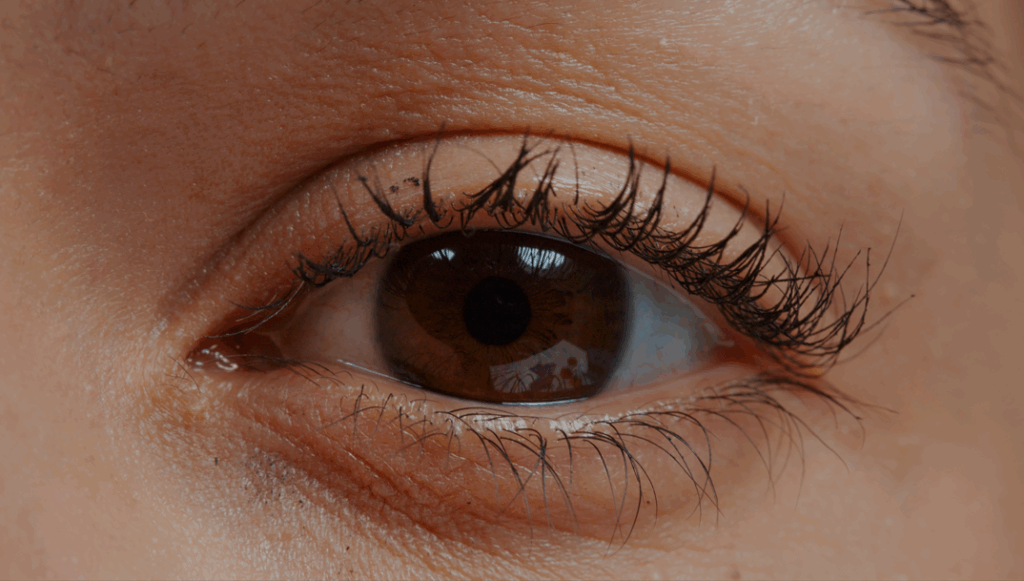If your baby’s eyes are constantly watery or seem crusty when they wake up, it can be worrying. One of the most common causes of this in infants is a blocked tear duct, also known as nasolacrimal duct obstruction. While it sounds serious, most of the time it’s not dangerous — but understanding the signs and treatment options can make life easier for both you and your little one.
At Pediatric Eye Associates, LLC, our board-certified pediatric ophthalmologists, Dr. Amy Lambert and Dr. Rachel Bloom, see many babies with blocked tear ducts. They know that parents often have questions about symptoms, home care, and procedures like probing and irrigation — and they take the time to answer them clearly and compassionately.

What Is a Blocked Tear Duct?
A tear duct drains tears from the eyes into the nose. In infants, it sometimes doesn’t open properly at birth, causing tears to pool in the eyes. This can lead to:
- Persistent watering in one or both eyes
- Crusty or sticky eyelids, especially after sleep
- Mild swelling or redness near the inner corner of the eye
Most blocked tear ducts in infants are caused by a small membrane at the end of the tear duct that hasn’t opened yet. In many cases, the duct will open on its own within the first year.
Signs to Watch For
It’s normal for babies to have occasional watery eyes, but these signs can indicate a blocked tear duct:
- Constant tearing that doesn’t seem related to crying
- Discharge that causes the eyelids to stick together in the morning
- Redness or mild swelling near the inner corner of the eye
- Occasional eye infections if the duct stays blocked
If your infant shows any of these symptoms, it’s a good idea to schedule an evaluation. While the condition isn’t usually dangerous, it can sometimes lead to infections that need attention.
Home Care and Gentle Massage
For many infants, simple at-home measures can help keep the eye comfortable and encourage the duct to open naturally. Our doctors often recommend:
- Gentle massage: Using a clean finger, apply firm pressure with the index or pointer finger in a downward movement over the tear duct, located medially to and below the eye. The pressure pushes the mucus and tears out through the puncta to prevent infection in the tear duct. It may also help open the membrane that blocks the tear duct at the opening in the nose. This is called the Crigler massage.
- Cleaning: Use a clean, warm washcloth to wipe away any crust or discharge.
These techniques are safe and effective for most infants, and they often help the tear duct open on its own without the need for surgery.
When Probing and Irrigation Are Needed
If a tear duct doesn’t open on its own by around 13 months, our doctors may recommend a procedure called probing and irrigation. This is a simple, quick outpatient procedure that helps open the blocked duct.
Here’s what parents can expect:
- Performed under General Anesthesia: The baby is comfortable and still during the procedure.
- Probing: A tiny, soft probe is gently passed through the tear duct to open any blockage.
- Irrigation: Saline and fluorescein dye are flushed through the duct to make sure it’s clear.
Most babies tolerate this very well, and it has a high success rate. Afterward, your doctor will show you how to care for your baby’s eyes at home to prevent infection and support healing.
Why Parents Trust Pediatric Eye Associates
Dr. Amy Lambert and Dr. Rachel Bloom specialize in pediatric ophthalmology and strabismus, and they’ve treated countless infants with blocked tear ducts.
Dr. Lambert, a New Jersey native and mother of twins, founded Pediatric Eye Associates with the goal of creating a clinic that feels warm and reassuring while providing top-quality care. Dr. Bloom, also a mother, trained at Albert Einstein College of Medicine and Montefiore Medical Center, and she brings both advanced training and a gentle approach to treating children of all ages.
Together, they provide families with not just medical expertise but also guidance, reassurance, and clear instructions for home care.
When to Call a Doctor
If your baby has persistent tearing, discharge, or signs of infection like redness, swelling, or pus, don’t wait. Early evaluation can prevent complications and make treatment easier.
At Pediatric Eye Associates, LLC, we’re here to help families across New Jersey navigate these common but confusing eye problems in infants and children. Our goal is to keep your baby’s eyes healthy and make sure you feel supported every step of the way.
For more information or to schedule an appointment, visit kideyedoc.com or call 973-315-6775 — your baby’s comfort and eye health are our top priority.




